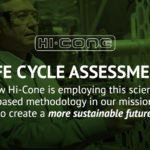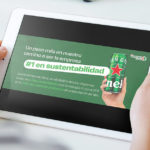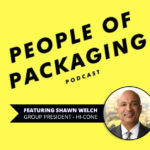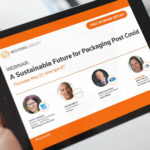In a linear economy, resources are drawn upon to create products which are used and generate waste. Essentially, it is a throwaway culture – one where consumption goes hand-in-hand with disposal. A circular economy takes a different approach. It, according to the Ellen MacArthur Foundation is: “based on the principles of designing out waste and pollution, keeping products and materials in use, and regenerating natural systems.”
Reuse and recycling are at the heart of keeping products and materials in use. Products that can be reused may be given a ‘second life’ and become useful all over again. For items that are not reusable the aim should be to recycle component materials to re-enter production processes. This helps them move from a Linear Economy to Circular Economy.
Naturally, a range of stakeholders must play their part:
• Manufacturers must choose materials carefully, with the aims of the circular economy in mind
• Scientists and innovators need resources and support to design materials that will recycle
• Waste management companies must invest in infrastructure and processes to enable recycling – and be encouraged and supported in doing so
• Governments and local authorities must provide simple and convenient mechanisms for used materials to enter recycling processes
• Consumers need to be motivated to engage with recycling initiatives and have access to clear, easy to understand information on what and how to recycle.
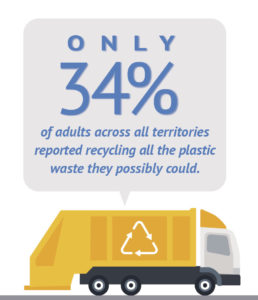 Yet, according to recent survey findings, only 34% of adults across four regions – the USA, UK, Mexico and Spain – believe that only half of what they put in recycling bins is recycled, while 31% believe a quarter is recycled and only 3% that everything is recycled.
Yet, according to recent survey findings, only 34% of adults across four regions – the USA, UK, Mexico and Spain – believe that only half of what they put in recycling bins is recycled, while 31% believe a quarter is recycled and only 3% that everything is recycled.
Consumer confidence
These findings indicate there is work still to be done to build consumer confidence in recycling initiatives. What’s more, it would appear that clarity is needed over the specifics around recycling of plastics: over half of adults (56%) responding to the survey said they find recycling different plastics difficult to understand. In this, consumers in the USA were least confused with 48% finding this difficult, followed by Spain (55%), Mexico (58%) and the highest proportion coming from the UK at 60%.
In the UK, an on-pack recycling label gives an indication when 75% or more of local authorities will collect that type of packaging for recycling and when, conversely, fewer than 50% will. For more detailed guidance consumers have to refer to their own local authority’s information and in 2018, the BBC reported there were over 39 different sets of rules.
Meanwhile, in the US, some recycling programs had to reduce the items they would accept for recycle in response to challenging market conditions. According to The Recycling Partnership, its 2019 State of Curbside survey found that 29% of programs did this, with the most commonly removed items including certain plastics (primarily #3-7 – a range of plastic types used in items including some food containers).
Capitalizing on good intentions
Ultimately, this means not all plastic waste enters recycling processes each year – less than 30% in Europe, the European Commission reported in 2018. Similarly, in the US, recovery rates for packaging and food-service plastic are put at only around 28% (through mechanical recycling and waste-to-energy).
The overwhelming message is that people want to recycle but quite often they simply don’t have the resources to do so. Education is at the heart of our global plastic recycling challenge. At Hi-Cone we’re committed to driving change. Our goal is to get everyone informed and working together towards a circular economy.
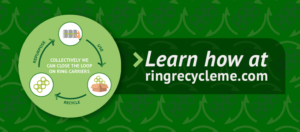
To find out how to recycle Hi-Cone’s plastic ring carriers, visit www.ringrecycleme.com, an international recycling program. The RingRecycleMe™ program is a circular economy solution. It gives plastic ring carriers a new life by using materials over and over again. By encouraging recycling over waste, we keep plastic out of landfills, and transform it into a valuable resource.
About the Author
 Jennifer Perr is the Global Sustainability Director at Hi-Cone. In this role, she collaborates with the entire value chain to both build and educate key stakeholders about the circular economy. She also leads Hi-Cone’s Vision 2025 team, focused on developing new multi-packaging solutions that continue Hi-Cone’s long history of packaging with positive end-of-life outcomes and that uphold Hi-Cone’s commitment to minimal environmental impact.
Jennifer Perr is the Global Sustainability Director at Hi-Cone. In this role, she collaborates with the entire value chain to both build and educate key stakeholders about the circular economy. She also leads Hi-Cone’s Vision 2025 team, focused on developing new multi-packaging solutions that continue Hi-Cone’s long history of packaging with positive end-of-life outcomes and that uphold Hi-Cone’s commitment to minimal environmental impact.



